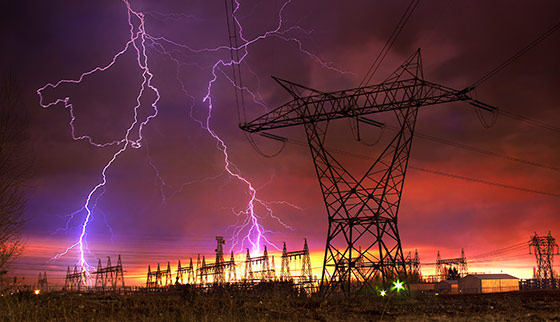This article was originally published by Jane L. Johnson at The Mises Institute.
Utility bills—for electricity, natural gas, water, and garbage—have by long-standing tradition been based on customer usage, measured in kilowatt-hours of electricity, therms or Btu of natural gas, hundred cubic feet of water, or number of garbage cans. Every residence and business has electric, gas, and water meters that measure utility usage.
But changes are afoot in the utility business as federal and state governments urge Americans to convert from fossil fuels to electricity for home heating, appliances, and transportation. From this transition will undoubtedly follow changes in utility rate-setting models.
Fixed Fees Coupled with Usage-Based Electricity Rates
Some electric utilities currently charge customers a flat, fixed fee as well as usage-based charges, both on the same monthly bill. The fixed fees, often called “customer charges” or “meter-reading charges,” are imposed irrespective of energy usage. These fees assure revenue stability and offset the overhead expenses of running electric utilities. Energy usage-based charges, which can vary seasonally, are designed (and regulated) to recover the cost of the electricity sold.
Economists refer to this pricing strategy as a two-part tariff in which the consumer must pay a fixed fee for the right to buy a product or service (energy in the case of electric utilities). This pricing model effectively maximizes revenue for sellers that have some monopoly pricing power in their respective markets because of the way they have structured their businesses. Electric utilities are, of course, regulated monopolies that serve designated geographic areas.
Other Examples of Two-Part Tariff Pricing Strategy
- Disneyland charges high entrance fees to its theme parks, but prices for individual rides are just sufficiently high to cover the marginal cost of operating the rides. A family that has traveled from Kansas to California or Florida Disney venues will likely not balk at paying high admission fees combined with low per-ride ticket prices.
- Popular retailer, Costco charges annual membership dues that allow customers to buy large product packages at relatively low unit prices. While Costco isn’t strictly considered a monopoly among warehouse stores, its unique membership and marketing methods effectively give it monopoly status with great cachet.
- Country clubs typically charge high membership fees that offer members the right to buy greens fees and participate in social activities with other like-minded, equally affluent members.
- Bars levy admission cover charges combined with fees per drink once patrons are inside.
The strategy works when sellers can easily identify different buyer groups and prohibit individual buyers from selling to nonmember buyers. For example, country club members cannot resell green fees or social activities to nonmembers. Disneyland visitors cannot resell ride tickets to those who have not paid the entrance fee. And electric utility ratepayers cannot resell to others who don’t have accounts with the utility.
Income-Based Fixed Charges
But what if utilities based their fixed fee on customers’ income levels rather than a flat uniform fee for every customer?
California, home to 10 percent of the total US population and often considered a state laboratory where policies begin before adoption across the nation, offers a glimpse into the future of utility rate setting as the two-part tariff pricing model has now taken on a new wrinkle.
In 2022 the supermajority Democrat state legislature passed and the governor signed Assembly Bill 205 (AB 205), which ordered the California Public Utilities Commission to authorize a “fixed charge” on residential electric bills by July 2024. Customers of the three large investor-owned utilities (IOUs)—Pacific Gas and Electric Company, Southern California Edison, and San Diego Gas and Electric—would pay this charge regardless of their electricity usage and in addition to that usage. The basis of the fixed charge is to be determined by each IOU utility, subject to approval by the California Public Utilities Commission.
The legislation also required the utilities to reduce their rates for electricity usage in order to assist low-income customers as electricity prices continue to rise. This represents not only a major shift in the standard rate-setting model from usage orientation to fixed charges but also a new emphasis on income and wealth redistribution from high-income customers to low-income, somewhat akin to a progressive income tax. There is no precedent for such redistribution in utility rate regulation.
AB 205 was intended to ensure that the IOUs’ new two-part pricing strategy be revenue-neutral—that is, continue to make sufficient revenue to invest in needed infrastructure for long-distance transmission (picture large pylons across the landscape) and distribution (local power lines delivering power to retail customers). The three IOUs own the vast majority of California’s energy infrastructure (poles and wires), the construction and maintenance of which are so vital to greater electrification of homes and transportation as California focuses on transitioning from fossil fuels to renewable energy.
A further intent of the legislation, moreover, was to raise additional revenue to pay for burying power lines that might otherwise ignite wildfires and constructing facilities to carry solar and wind-generated energy to large urban areas. Higher-income customers would pay a disproportionately high share of these construction and maintenance costs, even if they don’t use more power.
It all sounded like a win-win for progressives: Rich people pay more for energy, poor people pay less, and everyone makes progress on global warming. Until, that is, questions arose on possible fallout from this new rate-setting model: How to determine ratepayers’ income levels without invading their privacy?
How might higher income-based fixed charges, coupled with lower kilowatt-hours usage rates, reduce financial incentives to conserve energy usage? How might lower usage rates affect desirable future sales of rooftop solar installation?
Because of these imponderables and because the California Public Utilities Commission has not approved any of several possible methodologies to implement AB 205, one legislator has now introduced Assembly Bill 1999 to repeal the fixed-charge mandate. Another legislator who voted for AB 205 now confesses that the legislation was long and confusing and was called up for a vote very shortly after its text was available to read.
Blame is being passed around. Is the original AB 205 merely a profit grab by the three large IOUs? Were legislators remiss in approving it too quickly in their zeal to mandate climate goals? Who originally decided to incorporate the income-based fixed charge into the legislation?
Addressing these questions may be a challenge, something akin to solving an algebraic problem with more variables than equations, which leaves only an indeterminate solution. Too many conditions must be satisfied: revenue neutrality, protecting customer privacy when determining their income levels, energy usage rates low enough to protect low-income customers, usage rates high enough to encourage energy conservation and future installation of rooftop solar, sufficient revenue to invest in infrastructure for wildfire prevention, and additional grid capacity to support electric vehicle recharging stations and home heat pumps.
It is possible to solve such problems using linear programming, maximizing a linear function subject to the various constraints. But it is unlikely that California Public Utilities Commission staff could grapple with such a solution in time to approve income-based electric utility two-part tariffs in time for July 2024 implementation.
Whether this two-part tariff income-based pricing model might migrate to utilities in other states is unclear at this point, but its success or failure in California will probably determine its ultimate fate. In the meantime, perhaps the original legislation AB 205 is so poorly written that it should be repealed outright, consigning another well-intentioned governmental intervention effort to the proverbial dustbin of history.











0 Comments